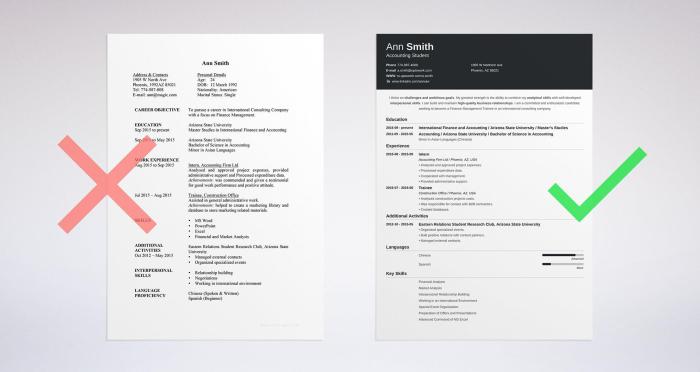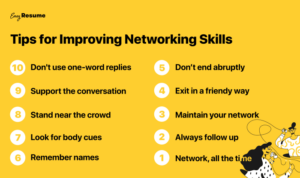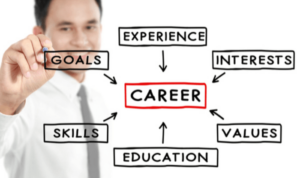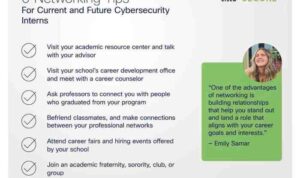Building a Strong Resume sets the foundation for a successful career journey, paving the way for exciting opportunities and potential growth in the job market. It’s all about showcasing your unique skills and experiences in a way that captivates potential employers and opens doors to new possibilities.
Importance of a Strong Resume
Having a strong resume is crucial in the job application process as it is often the first impression a potential employer has of you. A well-crafted resume can help you stand out from other candidates and increase your chances of landing a job interview.
Key Elements of a Strong Resume
Key elements that make a resume strong and impactful include:
- Clear and concise formatting that is easy to read
- Relevant work experience and skills tailored to the job you are applying for
- A professional summary or objective statement that highlights your strengths
- Achievements and accomplishments that demonstrate your value as a candidate
- Correct grammar, spelling, and punctuation to show attention to detail
Increasing Job Interview Chances
A well-crafted resume can significantly increase your chances of landing a job interview by showcasing your qualifications and experiences effectively. Employers use resumes to screen candidates and determine who to invite for an interview, so having a strong resume is essential in getting your foot in the door.
Building a Professional Summary

Creating a powerful professional summary is crucial to capturing the attention of potential employers and showcasing your unique skills and experiences. Here are some key components and tips for crafting a compelling professional summary:
Components of a Compelling Professional Summary, Building a Strong Resume
- Start with a strong opening statement that highlights your most relevant skills and experiences.
- Include key achievements and accomplishments that demonstrate your value to potential employers.
- Showcase your professional background, including your years of experience and areas of expertise.
- Highlight any certifications, awards, or recognition that are relevant to the job you are applying for.
- End with a strong closing statement that reinforces your enthusiasm for the role and your commitment to success.
Tailoring the Professional Summary to Specific Job Roles
- Research the job requirements and company culture to understand what the employer is looking for in a candidate.
- Customize your professional summary to align with the specific skills and experiences needed for the job.
- Use s and phrases from the job description to make your summary more relevant and appealing to the employer.
- Show how your past experiences and achievements directly relate to the responsibilities of the job you are applying for.
Examples of Strong Professional Summaries
“Results-driven marketing professional with over 5 years of experience in developing and executing successful campaigns. Skilled in market research, data analysis, and digital marketing strategies. Proven track record of increasing customer engagement and driving sales growth.”
“Dedicated project manager with PMP certification and 8 years of experience leading cross-functional teams to deliver projects on time and within budget. Strong communication and problem-solving skills, with a focus on quality and client satisfaction.”
Listing Work Experience: Building A Strong Resume

When it comes to listing work experience on your resume, there are some best practices to keep in mind to make sure you stand out to potential employers.
Quantifying Achievements and Responsibilities
- Use numbers, percentages, or other quantifiable data to showcase your accomplishments in previous roles.
- Instead of saying “increased sales,” quantify it by saying “increased sales by 20% in six months.”
- Quantifying your achievements helps employers understand the impact you had in your previous positions.
Formatting Work Experience
- Start with your most recent position and work backward.
- Use bullet points to list your responsibilities and achievements in each role.
- Make sure to tailor your work experience to the job you’re applying for by highlighting relevant skills and experiences.
- Use action verbs like “managed,” “developed,” “implemented,” to start each bullet point.
Showcasing Skills and Accomplishments
When it comes to crafting a strong resume, showcasing your skills and accomplishments is key to standing out to potential employers. Your skills and achievements demonstrate what you can bring to the table and why you are the perfect fit for the job.
Highlighting Relevant Skills and Achievements
One effective way to highlight your skills and accomplishments is by creating a dedicated section on your resume. This section should include a mix of hard skills (e.g., technical skills, programming languages) and soft skills (e.g., communication, leadership).
- Use bullet points to list your skills and accomplishments in a clear and concise manner.
- Quantify your achievements whenever possible to provide context and showcase your impact.
- Tailor your skills to match the job description and requirements of the position you are applying for.
- Include relevant certifications, awards, and recognition to further validate your skills and accomplishments.
Examples of Strong Resume Sections
Here are some examples of strong resume sections dedicated to showcasing skills and accomplishments:
| Skills | Achievements |
|---|---|
| Proficient in Adobe Creative Suite | Increased social media engagement by 30% through targeted campaigns |
| Fluent in Spanish | Received Employee of the Month award for exceptional customer service |
| Strong project management skills | Led cross-functional team to successfully launch a new product line |
Formatting and Design
When it comes to your resume, the format and design are just as important as the content. A clean and professional layout can make all the difference in catching the eye of potential employers and showcasing your skills effectively.
Organizing Information and Using Bullet Points
- Start with your contact information at the top of the resume, followed by a professional summary or objective statement.
- Organize your work experience in reverse chronological order, listing your most recent job first.
- Use bullet points to highlight key responsibilities and accomplishments in each position, making it easier for employers to scan through your experience.
- Include relevant skills and certifications in a separate section, using bullet points to make them stand out.
Selecting Appropriate Fonts and Design Elements
- Stick to simple and easy-to-read fonts like Arial, Calibri, or Times New Roman, keeping the font size between 10-12 points for body text and 14-16 points for headers.
- Avoid using flashy colors or fonts that may distract from the content of your resume. Stick to black text on a white background for a professional look.
- Use bold or italic formatting sparingly to draw attention to important information, such as job titles or key achievements.
- Incorporate design elements like lines or white space to separate sections and make your resume easier to navigate.












